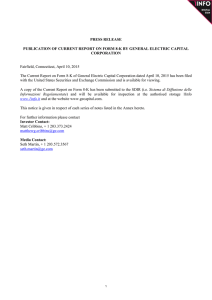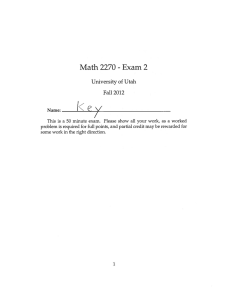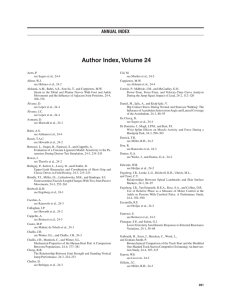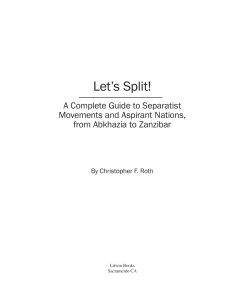Document 13593921
advertisement
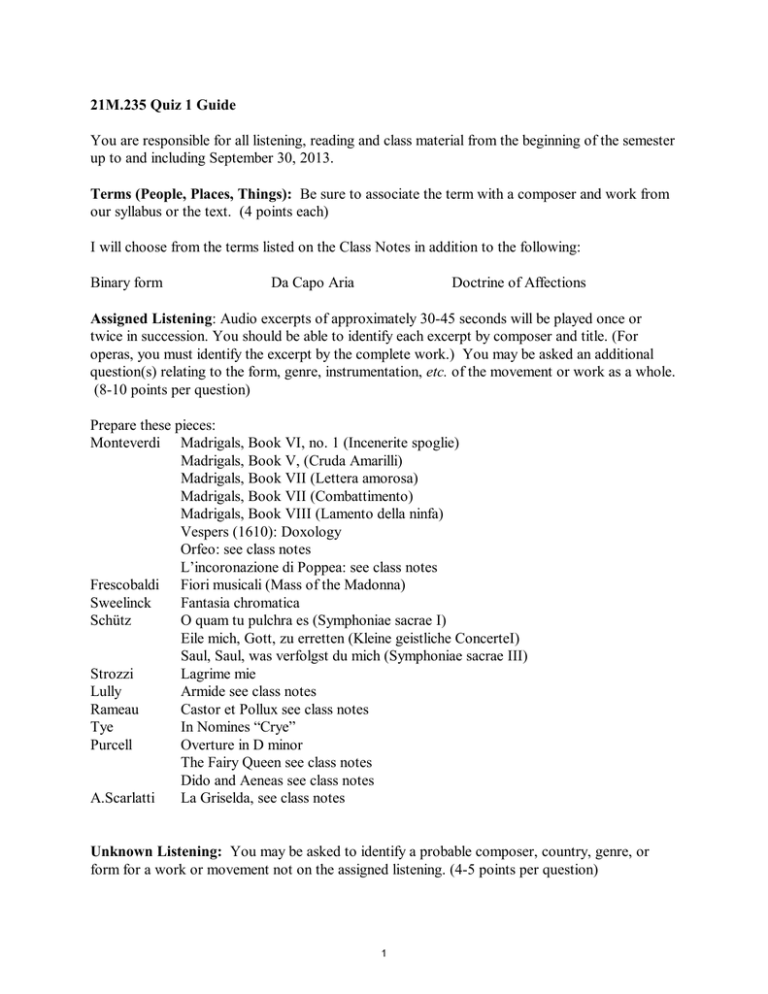
21M.235 Quiz 1 Guide You are responsible for all listening, reading and class material from the beginning of the semester up to and including September 30, 2013. Terms (People, Places, Things): Be sure to associate the term with a composer and work from our syllabus or the text. (4 points each) I will choose from the terms listed on the Class Notes in addition to the following: Binary form Da Capo Aria Doctrine of Affections Assigned Listening: Audio excerpts of approximately 30-45 seconds will be played once or twice in succession. You should be able to identify each excerpt by composer and title. (For operas, you must identify the excerpt by the complete work.) You may be asked an additional question(s) relating to the form, genre, instrumentation, etc. of the movement or work as a whole. (8-10 points per question) Prepare these pieces: Monteverdi Madrigals, Book VI, no. 1 (Incenerite spoglie) Madrigals, Book V, (Cruda Amarilli) Madrigals, Book VII (Lettera amorosa) Madrigals, Book VII (Combattimento) Madrigals, Book VIII (Lamento della ninfa) Vespers (1610): Doxology Orfeo: see class notes L’incoronazione di Poppea: see class notes Frescobaldi Fiori musicali (Mass of the Madonna) Sweelinck Fantasia chromatica Schütz O quam tu pulchra es (Symphoniae sacrae I) Eile mich, Gott, zu erretten (Kleine geistliche ConcerteI) Saul, Saul, was verfolgst du mich (Symphoniae sacrae III) Strozzi Lagrime mie Lully Armide see class notes Rameau Castor et Pollux see class notes Tye In Nomines “Crye” Purcell Overture in D minor The Fairy Queen see class notes Dido and Aeneas see class notes A.Scarlatti La Griselda, see class notes Unknown Listening: You may be asked to identify a probable composer, country, genre, or form for a work or movement not on the assigned listening. (4-5 points per question) 1 Concept, Context Questions: For the following topics (and possibly one not given in advance), write a short, but coherent, explanation. You may, but are NOT required, to write full sentences or an essay. Sometimes charts or bullet points may be more effective. Be sure to refer to examples from the assigned listening to illustrate your points. (5 points each) The use of pre-existing music in the organ music of the 17th century: what music was borrowed and how was it altered in the new composition? Discuss the differences in opera productions in Italy, France, and England in the 17th and early 18th century. Does a particular nation’s opera reflect the culture of that country? Why or why not? The first chapter of the text is titled “Monteverdi to Monteverdi.” Speculate on why Taruskin chose this particular title and how it affects our historical view of the 17th century. Explain the Doctrine of Affections using at least 2 works from our class materials. Be sure to include melody, rhythm, instrumentation and harmony in your discussion. 2 MIT OpenCourseWare http://ocw.mit.edu 21M.235 Monteverdi to Mozart: 1600-1800 Fall 2013 For information about citing these materials or our Terms of Use, visit: http://ocw.mit.edu/terms.
